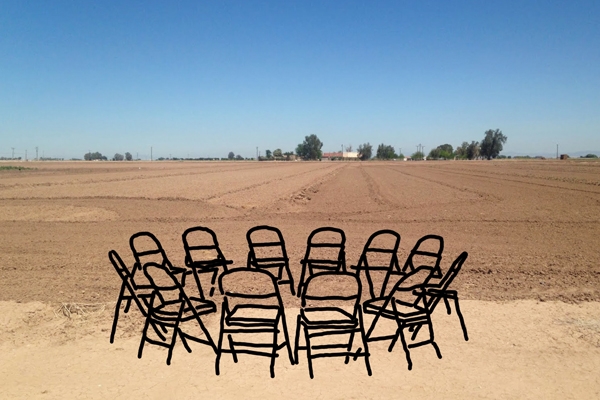
Groundwater regulation as culture-shift for California farmers
During times of drought in California, groundwater turns from crutch to lifeline, swelling from 40% of the state's total consumption to as much as 60%. Today, after five years of too little rain and snow, many areas are in overdraft -- meaning that the rate of groundwater pumping exceeds the rate of replenishment. Thousands of agricultural and domestic wells have gone dry.
California's groundwater reckoning has led to a rethinking of one of the state's most fiercely guarded assumptions about water: that groundwater belongs to whomever owns the land above it.
The Sustainable Groundwater Management Act (SGMA), signed by Jerry Brown in 2014, is California's first statewide law requiring that groundwater be managed as the interconnected system that it is. The legislation calls for the formation of local Groundwater Sustainability Agencies (GSAs) across the state. Each group will have to devise and implement plans to monitor and manage groundwater withdrawals in ways that achieve sustainability within a quarter century.
For decades, representatives from California's agriculture have questioned the wisdom of regulating groundwater, pointing out that restricting farmers' groundwater access at critical moments could force them to fallow land -- cutting into margins by which many farmers are just getting by. But, despite resistance, SGMA passed and the June 2017 deadline to form GSAs is nearly here; with that, the most profound shift in California water management in a century is underway.
By design, much of the responsibility for groundwater management will rest with farmers. On top organizing GSAs and drafting sustainability plans, farmers will have to rewrite their relationship to groundwater, and thus their land. Formerly treated as private property, groundwater is now recast as a common pool resource to be allocated by consensus and overseen by the state. This is a profound transition. It's also just one part of regulatory shift that's bigger than SGMA.
SGMA pushes many ongoing trends in farming to a whole new level. This series will cover some of these trends, including:
- an increase in regulation
- an increase in office-based work
- an increase in committee-based work
- an increase in paperwork
Groundwater may have emerged from obscurity, but the choices facing agricultural groundwater users remain largely invisible. So far, the conversation about SGMA has centered on the formidable legal and bureaucratic logistics of implementing it. This series turns to the emotional, personal, and community searching it will take to for SGMA to work on the ground.
About the series: Josephine Devanbu grew up in the Central Valley, surrounded by some of the nation's most productive farmland. She recently graduated from Brown University and the Rhode Island School of Design with joint degrees in Science and Society and Painting. She received a Maharam STEAM Fellowship and has spent several months in residence with the California Institute for Water Resources, interviewing farmers and many others impacted by new groundwater regulations in California. She thanks those who shared their strategies, struggles and stories of navigating the underground aquifer that kept her aboveground childhood green.
Other articles in the series: